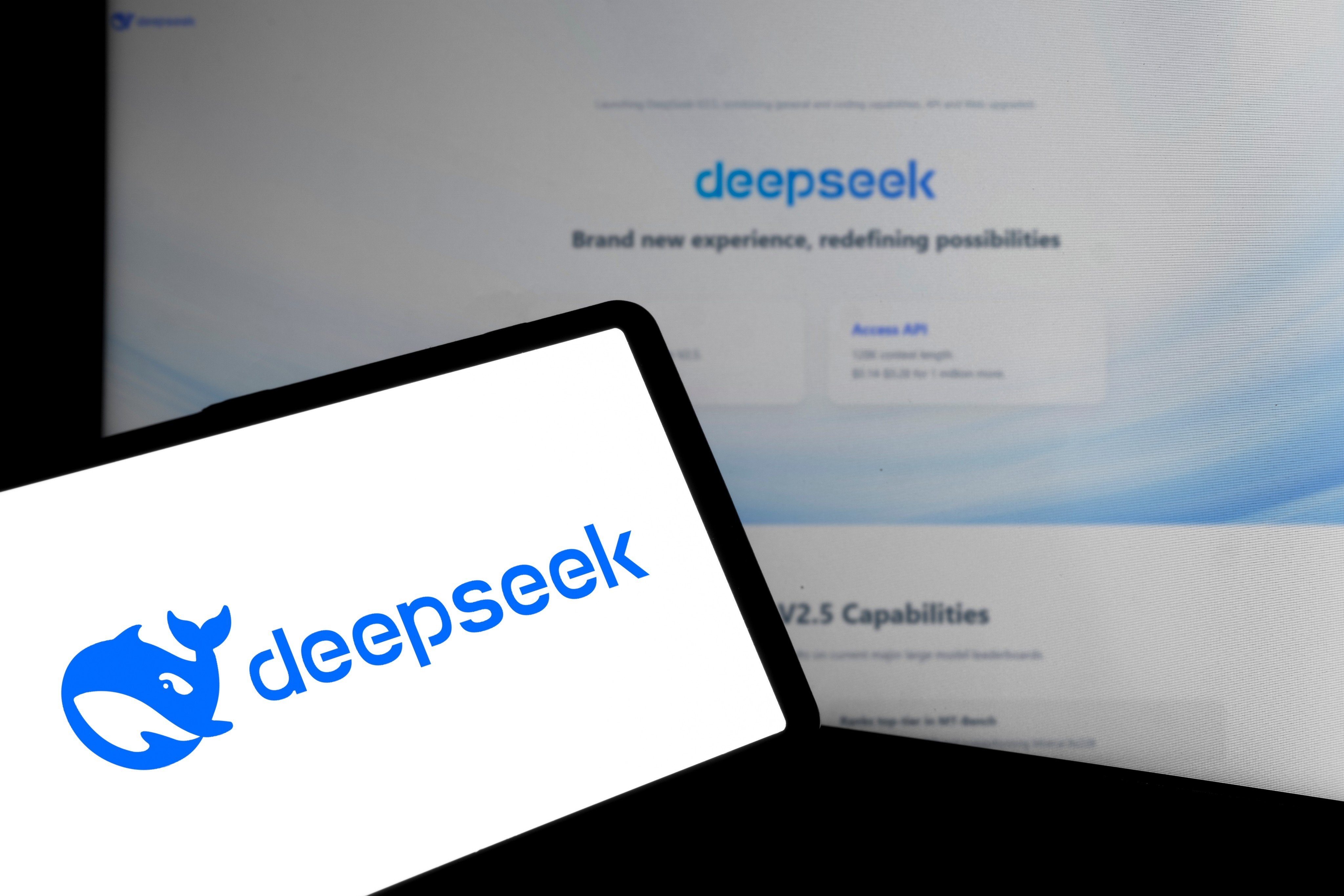
Duberfly
Add a review FollowOverview
-
Founded Date June 20, 2000
-
Sectors Construction / Facilities
-
Posted Jobs 0
-
Viewed 64
Company Description
What is China’s DeepSeek and why is it Flipping out the AI World?

What Is China’s DeepSeek and Why Is It Flipping out the AI World?

(Bloomberg)– DeepSeek, a Chinese artificial-intelligence startup that’s just over a year old, has stirred wonder and consternation in Silicon Valley after demonstrating AI designs that use similar efficiency to the world’s finest chatbots at seemingly a portion of their development expense.
DeepSeek’s development might provide a counterpoint to the widespread belief that the future of AI will need ever-increasing quantities of calculating power and energy.
Global innovation stocks toppled on Jan. 27 as buzz around DeepSeek’s innovation grew out of control and financiers began to absorb the implications for its US-based competitors and AI hardware providers such as Nvidia Corp.
. Exactly what is DeepSeek?
DeepSeek was established in 2023 by Liang Wenfeng, the chief of AI-driven quant hedge fund High-Flyer. The business establishes AI models that are open-source, indicating the designer neighborhood at big can check and enhance the software application. Its mobile app rose to the top of the iPhone download charts in the US after its release in early January.
The app distinguishes itself from other chatbots like OpenAI’s ChatGPT by articulating its reasoning before delivering an action to a timely. The company claims its R1 release uses performance on par with the most recent iteration of ChatGPT. It is providing licenses for people thinking about establishing chatbots using the innovation to build on it, at a rate well listed below what OpenAI charges for comparable access.
Follow The Big Take day-to-day podcast wherever you listen.
How does DeepSeek R1 compare to OpenAI or Meta AI?
DeepSeek says R1’s performance methods or enhances on that of competing designs in numerous leading standards such as AIME 2024 for mathematical jobs, MMLU for basic understanding and AlpacaEval 2.0 for question-and-answer efficiency. It likewise ranks amongst the top performers on a UC Berkeley-affiliated leaderboard called Chatbot Arena.
Though not fully detailed by the company, the cost of training and developing DeepSeek’s models seems only a fraction of what’s needed for OpenAI or Meta Platforms Inc.’s best items. The greater performance of the model puts into question the need for vast expenses of capital to acquire the most recent and most effective AI accelerators from the likes of Nvidia. It likewise concentrates on US export curbs of such sophisticated semiconductors to China – which were meant to prevent an advancement of the sort that DeepSeek appears to represent.
When did DeepSeek trigger global interest?
The AI designer has actually been carefully enjoyed since the release of its earliest design in 2023. Then in November, it provided the world a glance of its DeepSeek R1 reasoning design, developed to mimic human thinking. That model underpins its chatbot app, which took off in popularity as a much less expensive OpenAI alternative, with financier Marc Andreessen calling it “AI’s Sputnik moment.”
The DeepSeek mobile app was downloaded 1.6 million times by Jan. 25 and ranked No. 1 in iPhone app shops in Australia, Canada, China, Singapore, the US and the UK, according to information from market tracker App Figures.
What did we discover from the huge stock market response?
For much of the previous two-plus years given that ChatGPT began the worldwide AI craze, investors have actually bet that enhancements in AI will require ever advanced chips from the similarity Nvidia.

The DeepSeek breakthrough suggests AI models are emerging that can achieve a similar efficiency utilizing less advanced chips for a smaller sized outlay.
Investors offloaded Nvidia stock in reaction, sending out the shares down 17% on Jan. 27 and removing $589 billion of value from the world’s biggest business – a stock exchange record. Semiconductor machine maker ASML Holding NV and other business that likewise benefited from booming demand for innovative AI hardware likewise tumbled.
DeepSeek’s success casts doubt on the huge costs by companies like Meta and Microsoft Corp. – each of which has dedicated to capex of $65 billion or more this year, largely on AI infrastructure.

Shares in Meta and Microsoft likewise opened lower, though by smaller margins than Nvidia, with financiers weighing the potential for significant cost savings on the tech giants’ AI investments. Meta even recuperated later in the session to close greater. Chinese names connected to DeepSeek, such as Iflytek Co., likewise climbed up.
Some industry watchers suggested the market overall might gain from DeepSeek’s development if it pushes OpenAI and other US companies to cut their costs, stimulating faster adoption of AI.
How could DeepSeek impact the worldwide tactical competitors over AI?
AI is the crucial frontier in the US-China contest for tech supremacy. Washington has banned the export to China of devices such as high-end graphics processing systems in a bid to stall the nation’s advances.
DeepSeek’s development suggests Chinese AI engineers have actually worked their way around those restrictions, concentrating on higher efficiency with minimal resources. Still, it stays uncertain how much innovative AI-training hardware DeepSeek has had access to.
Already, designers around the globe are exploring with DeepSeek’s software application and seeking to construct tools with it. This might assist US companies improve the performance of their AI models and accelerate the adoption of sophisticated AI reasoning.
That in turn might require regulators to put down rules on how these models are used, and to what end.
DeepSeek’s progress raises a further question, one that often develops when a Chinese business makes strides into foreign markets: Could the chests of information the mobile app collects and stores in Chinese servers present a personal privacy or security dangers to US people?
The fact that DeepSeek’s designs are open-source opens the possibility that users in the US could take the code and run the models in a way that would not touch servers in China.
Who is DeepSeek’s founder?
Born in Guangdong in 1985, engineering graduate Liang has actually never studied or worked beyond mainland China. He received bachelor’s and masters’ degrees in electronic and details engineering from Zhejiang University. He established DeepSeek with 10 million yuan ($1.4 million) in signed up capital, according to business database Tianyancha.
The traffic jam for further advances is not more fundraising, Liang said in an interview with Chinese outlet 36kr, but US constraints on access to the very best chips. The majority of his top scientists were fresh graduates from top Chinese universities, he stated, stressing the need for China to establish its own domestic community akin to the one built around Nvidia and its AI chips.
“More financial investment does not necessarily cause more innovation. Otherwise, big business would take control of all development,” Liang said.
Liang has actually been compared to OpenAI founder Sam Altman, however the Chinese citizen keeps a much lower profile and rarely speaks publicly.
Where does DeepSeek stand in China’s AI landscape?
China’s innovation leaders, from Alibaba Group Holding Ltd. and Baidu Inc. to Tencent Holdings Ltd., have actually poured significant cash and resources into the race to obtain hardware and customers for their AI endeavors. Alongside Kai-Fu Lee’s 01. AI startup, DeepSeek stands out with its open-source technique – developed to recruit the biggest variety of users quickly before establishing money making methods atop that big audience.
Because DeepSeek’s models are more affordable, it’s currently contributed in helping drive down costs for AI designers in China, where the bigger players have actually participated in a cost war that’s seen successive waves of price cuts over the past year and a half.
What are DeepSeek’s drawbacks?
Like all other Chinese AI designs, DeepSeek self-censors on topics considered delicate in China. It deflects questions about the 1989 Tiananmen Square protests or geopolitically laden questions such as the possibility of China invading Taiwan. In tests, the can offering comprehensive actions about political figures like Indian Prime Minister Narendra Modi, however declines to do so about Chinese President Xi Jinping.
DeepSeek’s cloud facilities is likely to be tested by its unexpected popularity. The business quickly experienced a significant failure on Jan.
.


